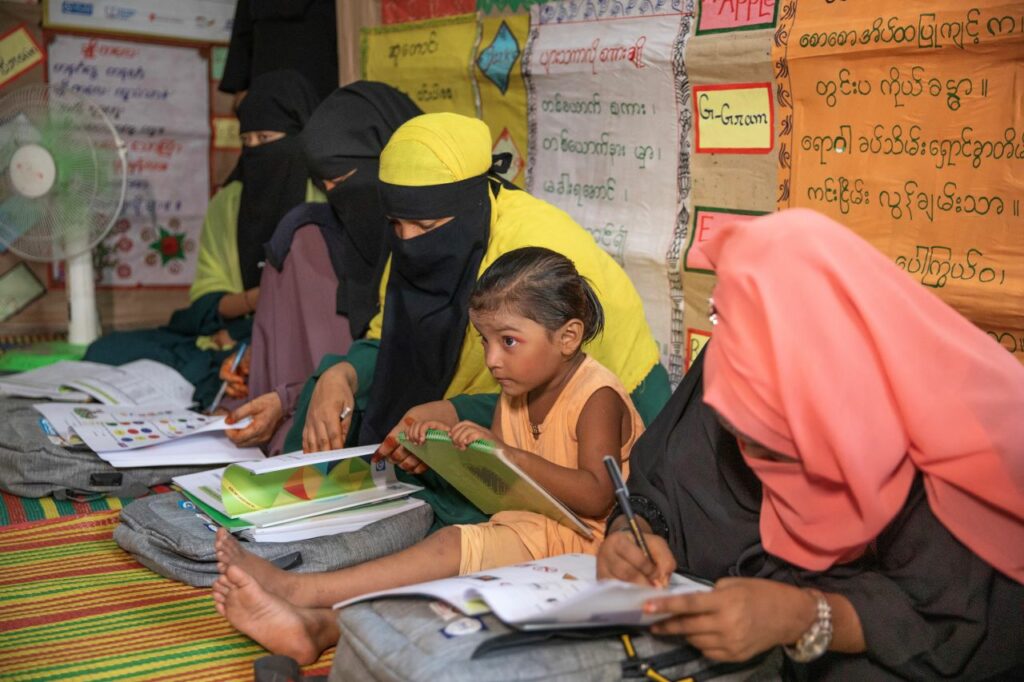Paul O’Brien, CEO of Plan International Ireland
Since it was such a primary and divisive focal point in the recent elections, one would be excused for thinking the issue of refugees did not need any further highlighting
But amid all the assumptions, perceptions, misinformation and fear being bandied around the ballot box in recent weeks, some cold hard facts were left unexamined.
We are witnessing the highest levels of human displacement in history. People are on the move in their millions, driven away from home by war, persecution and violence.
There are over 43.4 million refugees worldwide, half of whom are children.
In too many places, refugee children are being failed, unable to access essential services, their rights denied and their future grim.
Under the UN Convention on the Rights of the Child, all children, including refugee and asylum-seeking children, have a right to protection from violence, abuse, exploitation and neglect.
Becoming a refugee places children and young people at a heightened risk of multiple dangers, including violence, exploitation and neglect.
For girls in particular, these dangers are particularly acute, coming with the increased risk of sexual abuse and gender-based violence, child marriage and early and unwanted pregnancy.
Despite the disproportionate risks girls face – from sexual and gender-based violence to child marriage – girls’ specific vulnerability and needs are often overlooked in emergency responses due to the lack of data. Girls’ needs are less visible if they are not being counted. What gets counted, gets done.
Yet, even in the face of unimaginable hardships, refugee and asylum-seeking children, including girls and young women, often show extraordinary resilience. It’s vital to provide the support they need to thrive.
Yes, the scale of human displacement is confounding.
There were 110 million forcibly displaced people in the world at the end of May 2023, more than the entire population of Germany and almost half of them children.
Syrians account for almost one in five refugees globally, with 6.5 million hosted in 131 countries. Adding that figure to the number of others who are displaced internally, that is 13.5 million displaced Syrians, more than half the country’s total population.
More than five million Ukrainians remain displaced within their country and an additional 6.3 million are displaced across borders (June 2023).
Seven million Venezuelans have fled to Colombia and Ecuador, one of the largest displacement crises in the world.
The East and Horn of Africa, and Great Lakes region hosted nearly five million refugees at the end of 2022. The region hosts 20 percent of the global refugee population, and almost 85 percent of all refugees in the region live in Chad, Cameroon and Niger. By the end of 2022, there were around 2.3 million South Sudanese refugees. As of April 2023, more than 97 percent of South Sudanese refugees were hosted in Uganda, Sudan, Ethiopia and Kenya.
Forced displacement in the Central Sahel reached new heights in 2022, according to the UN, with over 2.9 million refugees and internally displaced people across Burkina Faso, Mali and Niger, and an emerging trend of Burkinabe seeking asylum southward and northward, including in North Africa and Europe.
Some 1.2 million stateless Rohingya refugees have fled Myanmar since the start of violence in 2017, and 90 percent of Rohingya refugees now live in Bangladesh and Malaysia. Around 400,000 school-aged children are among the more than one million Rohingya Muslims living in Cox’s Bazaar.

Close to half of all refugee children remain out of school. As they get older, they are at greater risk of being left behind.
From Eastern Europe to Sudan, from Colombia to Bangladesh, Plan International supports refugees by advancing children’s rights, access to education and equality for girls.
Governments and agencies must ensure refugees have access to physical and mental health services, livelihood support, and social protection, as well as access to quality education.
Some governments still have restrictive policies that don’t allow refugee children and their families to fully access formal education systems.
Governments must provide secure and equal access for all refugee children and host communities to national and local systems, to protect them against violence, exploitation, neglect and abuse.
Education for all refugee children is a fundamental human right.
Education in times of displacement can be both lifesaving and life-sustaining, contributing to the economic prosperity of individuals and societies.
Education also supports holistic learning, allowing refugee children to learn about peace, diversity, empathy, gender equality, sustainable development and care for the natural environment
All of which, one would hope, are factors that will go somewhere to ensure the cycle doesn’t continue into their future, and that of their children’s children.